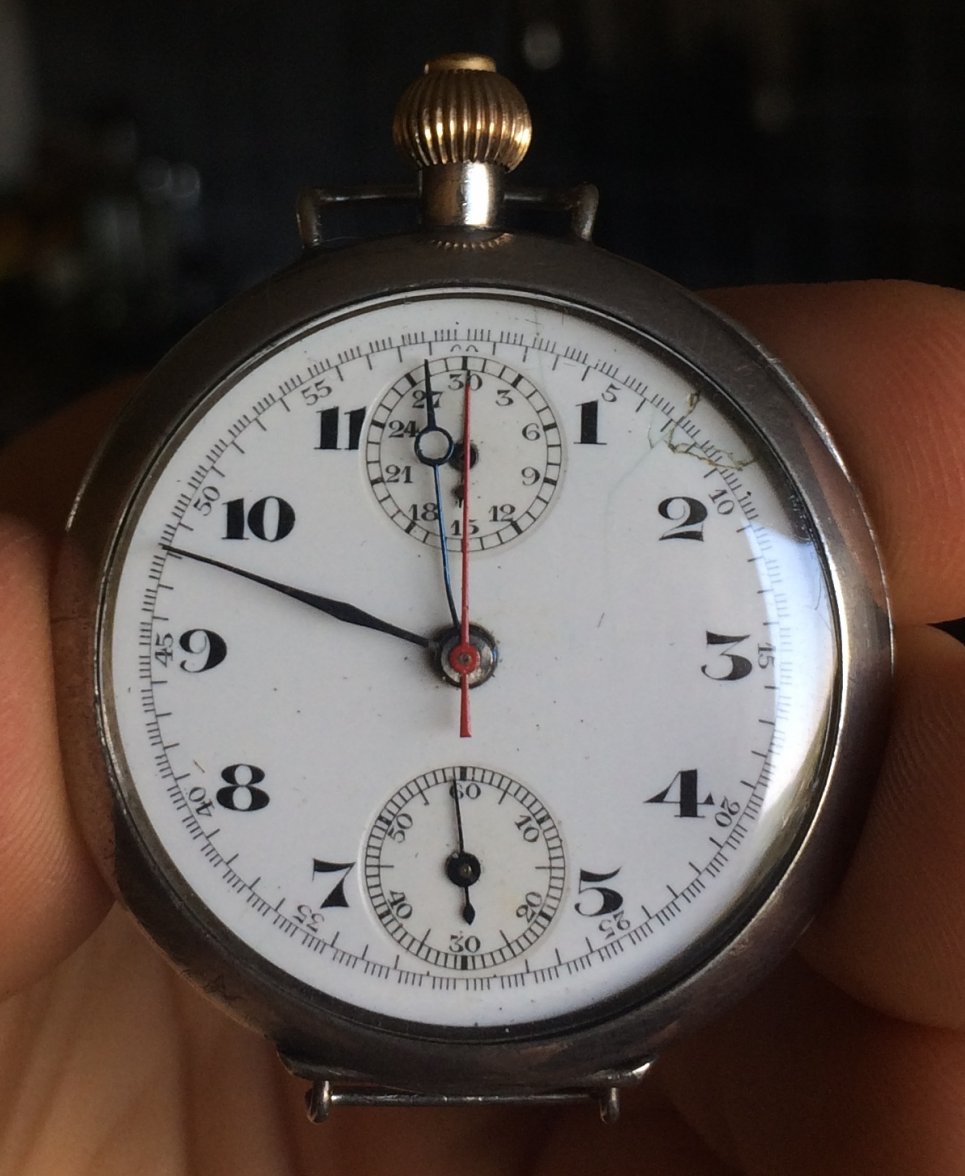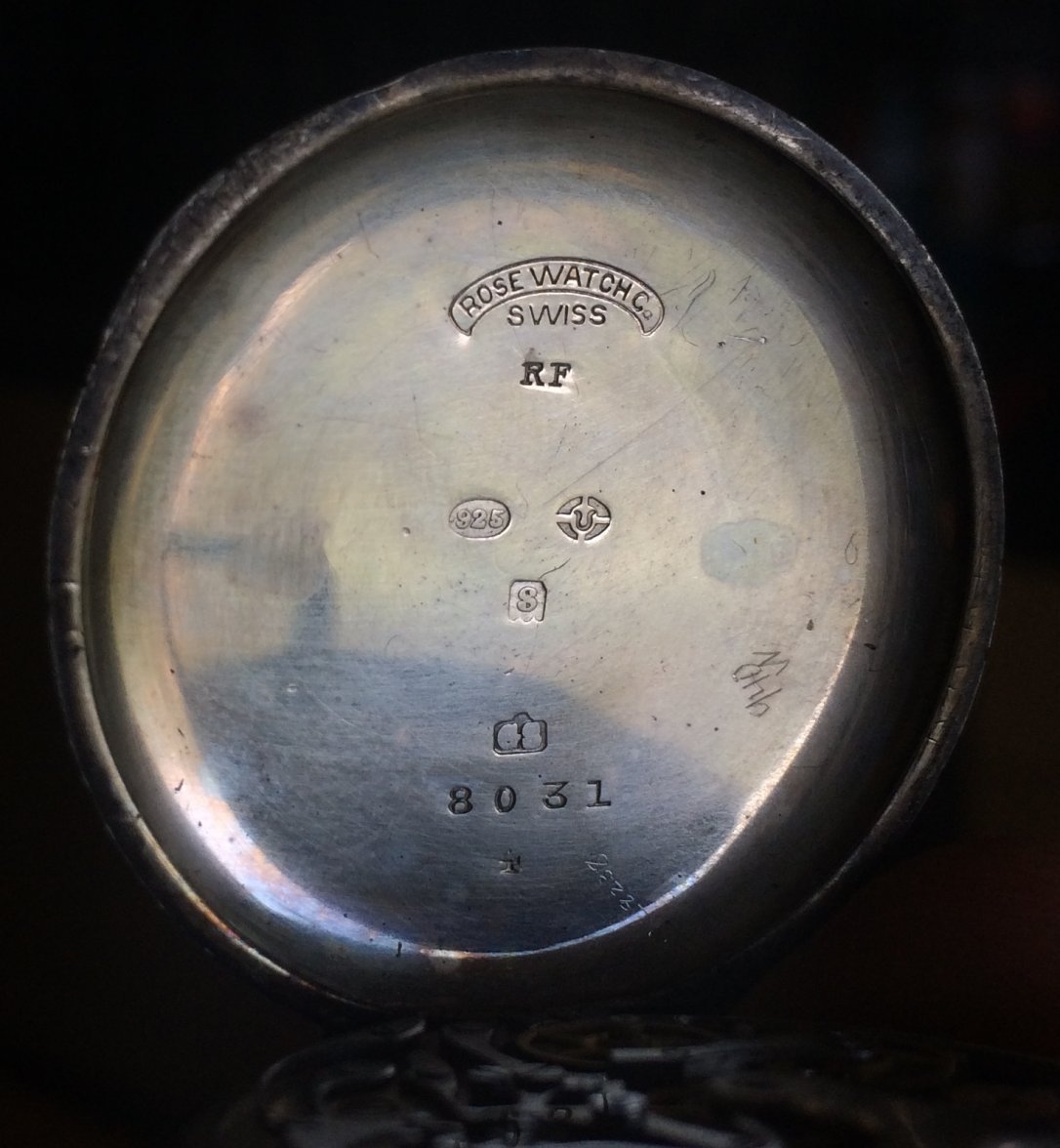DirtyDozen12
·A bit of history (as I understand it)
In an effort to enter the American market, Ed. Heuer & Cie became Ed. Heuer & Cie, Rose Watch Co. in 1912. In 1914, Heuer began producing chronograph wristwatches with silver cases, enameled dials, and crowns at 12 o'clock. In 1922, the Rose Watch Co. moniker was dropped.
sources: http://www.calibre11.com/history-of-heuer-i-foundation-1920s/2/ and http://www.tagheuer.com/int-en/watchmaking-history/the-first-wrist-worn-chronographs
My watch
According to the hallmarks, the sterling silver case was assayed in London in 1913/1914 and submitted by Stockwell & Co. It is 39mm in diameter with a lug width of 12mm. The case and movement share a serial(?) number of 8031.
source: http://www.vintagewatchstraps.com/casemarks.php
The watch is functioning well but the replacement hands certainly need attending to. I have found a similar watch for reference (http://www.ukwatches.com/shop/?wpsc...-silver-cased-heuer-single-button-chronograph) and I wonder how I might go about finding a set of spade hands that will fit.
Also, I have not been able to identify the manufacturer of the beautiful movement. It is about 14 lignes, contains 15 jewels, and has been adjusted to 4 positions. According to ukwatches.com, it is a predecessor to the Valjoux 22 but I have not found any information to confirm this.
Any thoughts would be welcomed, here is the watch.
In an effort to enter the American market, Ed. Heuer & Cie became Ed. Heuer & Cie, Rose Watch Co. in 1912. In 1914, Heuer began producing chronograph wristwatches with silver cases, enameled dials, and crowns at 12 o'clock. In 1922, the Rose Watch Co. moniker was dropped.
sources: http://www.calibre11.com/history-of-heuer-i-foundation-1920s/2/ and http://www.tagheuer.com/int-en/watchmaking-history/the-first-wrist-worn-chronographs
My watch
According to the hallmarks, the sterling silver case was assayed in London in 1913/1914 and submitted by Stockwell & Co. It is 39mm in diameter with a lug width of 12mm. The case and movement share a serial(?) number of 8031.
source: http://www.vintagewatchstraps.com/casemarks.php
The watch is functioning well but the replacement hands certainly need attending to. I have found a similar watch for reference (http://www.ukwatches.com/shop/?wpsc...-silver-cased-heuer-single-button-chronograph) and I wonder how I might go about finding a set of spade hands that will fit.
Also, I have not been able to identify the manufacturer of the beautiful movement. It is about 14 lignes, contains 15 jewels, and has been adjusted to 4 positions. According to ukwatches.com, it is a predecessor to the Valjoux 22 but I have not found any information to confirm this.
Any thoughts would be welcomed, here is the watch.
Edited:


